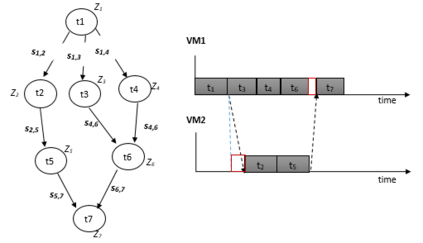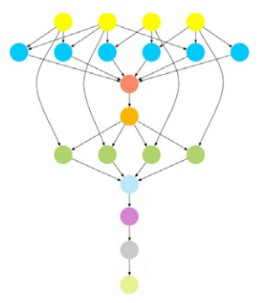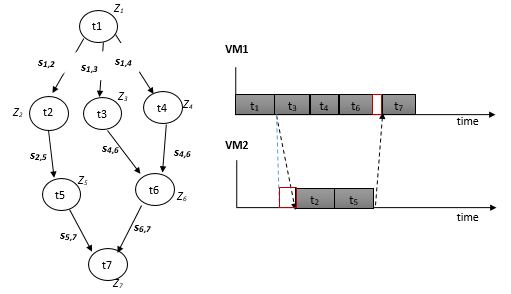The utilization of cloud environments to deploy scientific workflow applications is an emerging trend in scientific community. In this area, the main issue is the scheduling of workflows, which is known as an NP-complete problem. Apart from respecting user-defined deadline and budget, energy consumption is a major concern for cloud providers in implementing the scheduling strategy. The types and the number of virtual machines (VMs) used are determinant to handle those issues, and their determination is highly influenced by the structure of the workflow. In this paper, we propose two workflow scheduling algorithms that take advantage of the structural properties of the workflows. The first algorithm is called Structure-based Multi-objective Workflow Scheduling with an Optimal instance type (SMWSO). It introduces a new approach to determine the optimal instance type along with the optimal number of VMs to be provisioned. We also consider the use of heterogeneous VMs in the Structure-based Multi-objective Workflow Scheduling with Heterogeneous instance types (SMWSH), to highlight the algorithm's strength within the heterogeneous environment. The simulation results show that our proposal produces better energy-efficiency in 80% of workflow/workload scenarios, and save more than 50% overall energy compared to a recent state-of-the-art algorithm.
翻译:利用云层环境来应用科学工作流程应用是科学界新出现的趋势。 在这一领域,主要问题是工作流程的时间安排, 即所谓的NP- 完整的问题。 除了尊重用户定义的最后期限和预算, 能源消耗是云体提供者在执行排期战略时的主要关注事项。 使用的虚拟机器的类型和数量是处理这些问题的决定因素, 其确定受到工作流程结构的极大影响 。 在本文件中, 我们提出利用工作流程结构特性结构的两种工作流程排程算法。 第一个算法称为基于结构的多目标工作流程调度法, 称为优化实例类型( SMWSO) 。 它提出了一种新的方法, 用以确定最佳实例类型以及提供的最佳 VMS数量。 我们还考虑在基于结构的多目标工作流结构中使用混杂的 VMs 来显示这些问题, 与异性实例类型( SMWSH) 一起进行调控。 模拟结果显示, 我们的提议在最新的工作流程/工作算法情景的80% 与50% 相比, 省略了整个能源算法的50% 。





